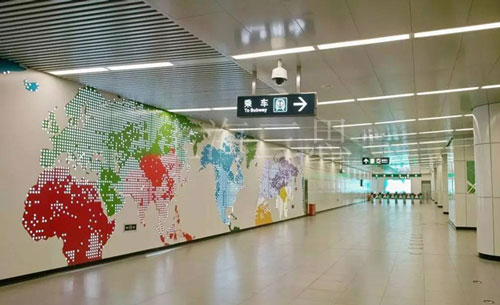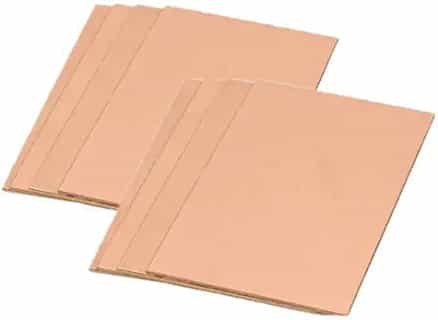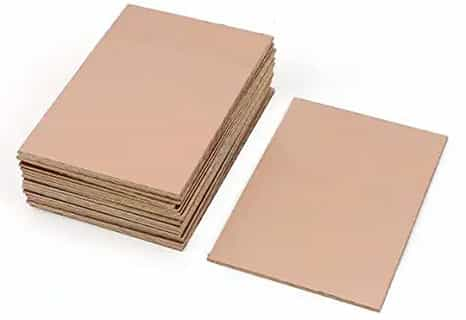With the development of LED lighting technology, LED lighting products have been widely used in various fields of society. The wide use of LED lighting products has made people more inclined to intelligently manage products and reduce maintenance costs. The new LED panel light launched by Shanghai Sansi, a well-known lighting brand in the industry, has created a hot-swap technology application based on high reliability. This time, “thinking ahead and doing firstâ€, the significance of the application of LED intelligent panel light hot plugging technology How big? Let us find out!
1, think twice and go ahead, the advantages of LED new panel lights
Sansi LED new panel light, using reflective surface light-emitting technology, the light is projected through the high-reflectivity mask through secondary reflection, reducing glare, the light is softer and more comfortable. The eye is not easy to fatigue, especially suitable for long-term exposure to indoor lighting. Student, subway passenger or office staff. The application of the patented reflective material ensures the reflection efficiency of the light, and the original high light efficiency of the panel lamp is retained to the utmost extent.
In order to ensure the reliability of use, Shanghai Sansi LED new panel lights adhere to the "maintenance-free" design principle, improve the heat dissipation performance of the lamps, reduce the LED light decay, greatly extend the life of the lamps, and save the maintenance costs of lamps.

2, think twice and go ahead, think twice LED new panel lights are smarter
Sansi LED new panel light can be equipped with intelligent control system. There are several operating modes. It can control the opening and closing, illumination brightness and color temperature of panel lights according to the time, time and flow, and work requirements. With the development of intelligent control technology, engineers only need to monitor and monitor the operation of the lamps in real time according to the intelligent system, as well as automatic fault reporting technology to accurately locate the fault points of the lamps.
3, think twice and go ahead, LED new panel light creates a new application for hot plugging
Traditional lighting maintenance methods have many steps, low efficiency, and maintenance and installation are time-consuming and labor-intensive. The introduction of the new panel light developed by Sansi has changed this situation, not only safe and reliable, but also in response to problems such as line modification, redecoration, troubleshooting and overhaul in lighting scenes, Shanghai Sansi has also added “hot plugging†technology. It is not necessary to turn off the system, no need to power off, and the lamp can be replaced without replacing the power supply, which greatly improves the maintenance efficiency of the staff. Especially in the subway lighting, the advantage of this hot plug function is more obvious, and it will hinder the passenger traffic. To the minimum.
Of course, there is a prerequisite for implementing hot-swap technology, which is hardware performance. A complete hot-swap system includes hardware, software, systems, etc. that support hot-swappable systems. The hardware performance will directly affect the hot plug function. The Sansi LED panel light has low failure rate and high reliability. When the key function module is hot swapped, it can effectively control the instantaneous current strong impact, protect the internal components and chips, and recover quickly. Do plug and play.

Conference room application effect reference
Summary: As the saying goes, “To be efficient with timeâ€, Sansi LED intelligent panel light is energy efficient, flexible and easy to use, and the new hot plug application provides another guarantee for reliable and efficient work. At the same time, the intelligent control system provides convenient, energy-efficient, safe and reliable, and is widely used in public places such as subways, supermarkets, and classrooms.
Think twice about the industry's first, create a hot-swappable technology application, which is of great significance to the reliability of the industry's products. It is the biggest responsibility for customers to take precautions into consideration.

PCB Material Fr4 Substrate PCB Board Manufacturing Service
As you know, the printed circuit board plays a vital role in electronic products, so you need to consider how to choose the right material in your PCB manufacturing. JHYPCB can offer you the lowest possible costs and the very finest in high-quality PCB fabrication and high-quality PCB assembly. However, there are many different types of PCB materials, such as FR-4 material, HDI material, Rogers PCB material, and so on. In general, we use the standard FR-4 material for the printed circuit boards to reduce product costs, which is a good option because FR-4 material is affordable and useful for many applications. However, FR-4 material is not the only type of PCB material; comparing to PCB material, FR-4 material, and Rogers material is essential.


What is FR4?
FR4 is a standard defined by the NEMA (National Electrical Manufacturers Association) for a glass-reinforced epoxy resin laminate.
"FR" indicates the material is flame-retardant, and the "4" indicates woven glass-reinforced epoxy resin. Single or double-sided PCB structures consist of an FR4 core and top and bottom copper layers. Multilayer PCB boards have additional prepreg layers between the center core and top and bottom copper layers. The core consists of a substrate with copper covering, also referred to as a copper-clad laminate(CCL). The core, laminate, and prepreg may all be FR4 with the copper sheets between the signal and ground layers. FR4 is the most common material grade that comprises fabricated circuit boards.
FR-4 or FR4`s properties and characteristics make it very versatile at an affordable cost. Before the explosion of multilayer PCBs, there were many alternative board materials to FR4. These included FR2, CEM 1, and CEM 3, which were paper-based. However, the strength of FR4, especially for multilayer PCB boards, was a significant factor in separating it from alternatives to become the industry standard. Therefore, Most PCBs are made using FR4 as the base material.
FR4 materials and characteristics
Its glass transition (TG) is 115°C to 200°C for the High TGs or HiTGs, depending on the manufacturing methods and the resins used. A standard FR-4 PCB will have a layer of FR-4 sandwiched between two thin layers of laminated copper.
FR-4 uses bromine, a so-called halogen chemical element that is fire resistant. It replaced G-10, another less resistant composite, in most of its applications.
FR4 has the advantage of having an excellent resistance-weight ratio. It does not absorb water, keeps high mechanical strength, and has an excellent insulating capacity in dry or humid environments.
Examples of FR-4
- Standard FR4: as its name indicates, this is the standard FR-4 with heat resistance of the order of 140°C to 150°C.
- High TG FR4: this type of FR-4 has higher glass transition (TG) of around 180°C.
- High CTI FR4: Comparative Tracking Index higher than 600 Volts.
- FR4 with no laminated copper: ideal for insulation plates and board supports.
- There are more details of the characteristics of these different materials later in the article.
Factors to consider when choosing the thickness
- Compatibility with components: even though FR-4 is used to produce many types of the printed circuit, its thickness affects its components. For example, THT components are different from other components and require a thin PCB.
- Space-saving: space saving is essential when designing a PCB, particularly for USB connectors and Bluetooth accessories. The thinnest boards are used in configurations in which space-saving is crucial.
- Design and flexibility: most manufacturers prefer thick boards to thin ones. Using FR-4, if the substrate is too thin, it would be at risk of breaking if the board dimensions were increased. On the other hand, thicker boards are flexible and make it possible to create V-grooves.
- The environment in the PCB that will be used must be considered. For an electronic control unit in the medical field, thin PCBs guarantee reduced stress. Boards that are too thin - and therefore too flexible - are more vulnerable to heat. They can bend and take on an undesirable angle during the component soldering steps.
- Impedance control: the board thickness implies the dielectric environment consistency, in this case, FR-4, which facilitates impedance control. When impedance is an essential factor, the board thickness is a determining criterion to be taken into account.
- Connections: the type of connectors used for a printed circuit also determines the FR-4 thickness.
The Different Types of FR-4 Available From JHYPCB
JHYPCB STANDARD FR-4 MATERIAL PROPERTIES
- High Glass Transition Temperature (Tg) (150Tg or 170Tg)
- High Decomposition Temperature (Td) (> 345º C)
- Low Coefficient of Thermal Expansion (CTE) ((2.5%-3.8%)
- Dielectric Constant (@1 GHz): 4.25-4.55
- Dissipation Factor (@ 1 GHz): 0.016
- UL rated (94V-0, CTI = 3 minimum)
- Compatible with standard and lead-free assembly.
- Laminate thickness available from 0.005" to 0.125"
- Pre-preg thicknesses available (approximate after lamination):
- (1080 glass style) 0.0022"
- (2116 glass style) 0.0042"
- (7628 glass style) 0.0075"
Standard FR4
- FR4 SHENGYI family S1000H
- Thickness from 0.2 to 3.2 mm.
- FR4 VENTEC family VT 481
- Thickness from 0.2 to 3.2 mm.
FR4 High TG
- FR4 SHENGYI family S1000-2
- Thickness from 0.6 to 3.2 mm.
- FR4 VENTEC family VT 47
- Thickness from 0.6 to 3.2 mm.
FR4 High IRC
- FR4 SHENGYI family S1600
- Standard thickness 1.6 mm.
- FR4 VENTEC family VT 42C
- Standard thickness 1.6 mm.
FR4 with no copper
- This material is an epoxy glass with no copper, designed for use in insulation plates, templates, board supports, etc. They are manufactured using Gerber type mechanical drawings or DXF files.
- Thickness from 0.3 to 5 mm.
The Difference Between FR-4 Material and Rogers Material
1. FR-4 material is cheaper than Rogers material.
2. Comparing to FR-4 material, Rogers material is great with high frequencies.
3. FR-4 material has a high Df or dissipation factor than Rogers material, suffering more signal loss.
4. In impedance stability, Rogers material has a wider range of Dk values than FR-4 material.
5. For dielectric constant, FR-4 features a Dk of about 4.5, which is lower than Rogers material with around 6.15 to 11.
6. In temperature management, Rogers material has a less variation comparing to FR-4 material.
When is FR4 Not the Best Material For Your Board?
FR4 is indeed a good standard or default option for your board material in most cases. However, there are cases where FR4 is not the best material for your board, as listed below.
- If lead-free soldering is required
If your boards will be distributed in Europe and must adhere to The Restriction of Hazardous Substances Directive (RoHS) or your client necessitates that lead-free soldering be used, then you may want to explore other material options. This is due to the fact that reflow temperatures for no-lead PCBA(Lead-free PCB Assembly) may reach as high as 250°C, which substantially exceeds the Tg for many versions of FR4.
- If high-frequency signals are used
At high frequencies, FR4 boards are not able to maintain a constant impedance and reflections may occur that negatively impact signal integrity. This is a consequence of the relatively high value for dk.
- If the board will be exposed to extremely high temperatures during operation
It is also ill-advised to use FR4 if the PCB will be required to operate in an environment under extremely high temperatures. An example would be near the engine compartment of an aerospace vehicle.
FR4 is rightly the most used material in PCB construction. Boards made from FR4 are strong, water resistant, and provide good insulation between copper layers that minimizes interference and supports good signal integrity. However, at high frequencies and in environments, FR4 is not the best material to use for your boards. At JHYPCB, the industry leader in fast, high-quality PCB Prototype and low-volume manufacturing, we are capable to meet your board material needs for any case. We will work with you to help you select the materials that will best implement your design intent.
And to help you get started on the best path, we furnish information for your DFM checks. If you are ready to have your design manufactured, Try to contact us via email.
Fr4 PCB, Fr-4 Substrate PCB, PCB Material Fr4, Fr4 PCB Material
JingHongYi PCB (HK) Co., Limited , https://www.pcbjhy.com